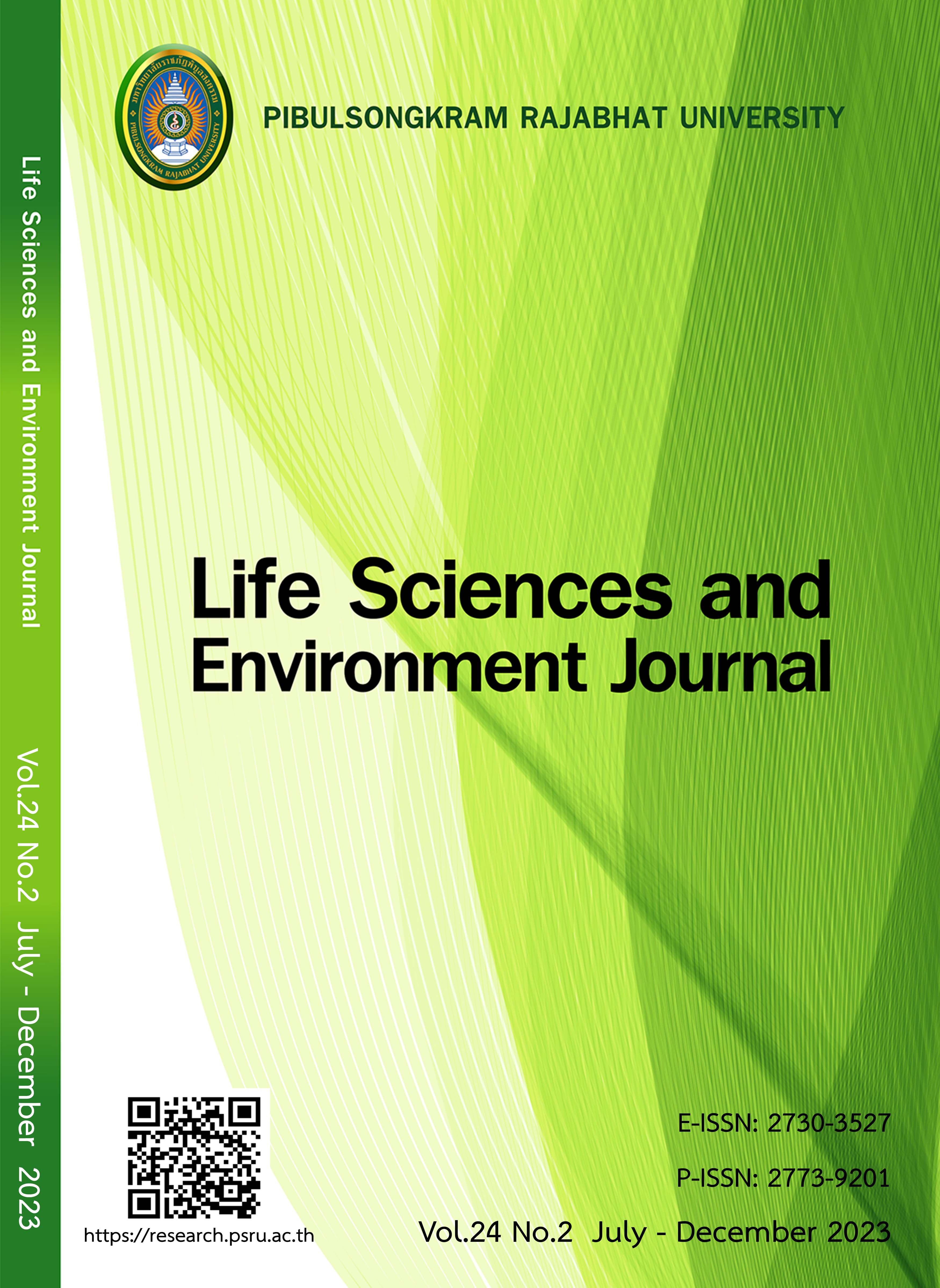THE RELATIONSHIP MODELS BETWEEN THE EXTREME VALUES OF RAINFALL AND TEMPERATURE WITH THE YIELD OF SAFE RICE IN PHITSANULOK PROVINCE
DOI:
https://doi.org/10.14456/lsej.2023.39Keywords:
Climate extremes, Machine learning, Safe rice production, Small dataAbstract
The ability to predict the future crop yield facilitates the responsible authorities to make the most appropriate decisions in order to ensure food security in the present and the future. As a result, studying the relationship between climate extremes and agricultural productivity is essential. Therefore, this research was to study the relationship between the extreme values of rainfall and temperature and the yield of safe rice in Phitsanulok province using three machine learning methods. Three machine learning methods consisted of multiple linear regression, random forest and support vector machine. The results showed that the extreme values of rainfall correlate with safe rice yields in Phitsanulok province. The extreme values of rainfall could explain 86% of the variation in the yield of safe rice in Phitsanulok province. The random forest method was an effective and reliable method for this modeling. In addition, it was found that the extreme values of average temperature were related to the yield of safe rice in Phitsanulok province. The extreme values of average temperature could explain the variation in safety rice yield in Phitsanulok province by 98%. The support vector machine method was effective and reliable for modeling the yield of safe rice in Phitsanulok province.
References
Alidoost F, Su Z, Stein A. Evaluating the effects of climate extremes on crop yield, production and price using multivariate distributions: A new copula application. Weather and Climate Extremes 2019; 26:1-9.
Crane-Droesch, A. Machine learning methods for crop yield prediction and climate change impact assessment in agriculture. Environmental Research Letters 2018;13:114003.
Feng J, Jintrawet A, Sangchyoswat C. The relationships between extreme precipitation and rice and maize yields using machine learning in Sichuan province, China. Current Applied Science and Technology 2019;20(3):453-469.
Harrison MT, Cullen BR. Rawnsley RP. Modelling the sensitivity of agricultural systems to climate change and extreme climatic events. Agricultural Systems 2016;148:135-148.
Konduri VS, Vandal TJ, Ganguly S, Ganguly AR. Data science for weather impacts on crop yield. Frontiers in Sustainable Food System 2020;52(4):1-11.
Phoket Y. The extension of safety and standardized rice production adhering to good agricultural practice for farmers in Roi Et Province. Khon Kaen Agriculture Journal 2016;44(1):624-629.
Rotter RP, Appiah M, Fichtler E, Kersebaum KC. Linking modelling and experimentation to better capture crop impacts of agroclimatic extremes-A review. Field Crops Research 2018;221:142-156.
Tan G, Zhaobo S, Chen H. Diagnosis of summer time floods/droughts and their atmospheric circulation anomalies over north China. ACTA Meteorol Sinica 2003;17:257-273.
Vogel E, Donat MG, Alexander LV, Meinshausen M, Ray DK, Karoly D, Meinshausen N. et al. The effects of climate extremes on global agricultural yields. Environmental Research Letters 2019; 14: 054010.
Downloads
Published
How to Cite
Issue
Section
License
Copyright (c) 2023 Life Sciences and Environment Journal

This work is licensed under a Creative Commons Attribution-NonCommercial-NoDerivatives 4.0 International License.
Each article is copyrighted © by its author(s) and is published under license from the author(s).










